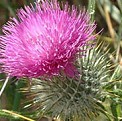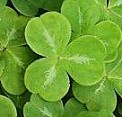 Project Britain
Project Britain
British Life and Culture
by Mandy Barrow
- Search our Site
- Project Britain
- Calendars
- Facts and figures
- London
- Great Britain
- Union Flag
- A-Z of Britain
- Customs & traditions
- Britain today
- Daily Life
- Money
- Etiquette
- Monarchy
- Government
- Education
- Tourist Information
- Food and drink
- Sports and leisure
- History
- Kings and Queens
- Superstitions
- Glossary
|
What are Britain’s National Emblems? What are the Symbols of England, Scotland and Wales? |
|||||||||
| EMBLEMS OF BRITAIN
Each country in Britain has its own patron saint and floral emblem:
The Royal Coat of Arms carry the symbols representing England, Scotland and Ireland, the Sovereign's motto and the lion and the unicorn. Find out more SYMBOLS OF ENGLAND When you think of England and the rest of Britain what images appear in your mind? Red double-decker buses and black taxis are a typical sight on London's busy roads. |
|||||||||
 © Copyright - please read © Copyright - please read All the materials on these pages are free for homework and classroom use only. You may not redistribute, sell or place the content of this page on any other website or blog without written permission from the Mandy Barrow. |
© Copyright Mandy Barrow 2014
Mandy is the creator of the Woodlands Resources section of the Woodlands Junior website.
The two websites projectbritain.com and primaryhomeworkhelp.co.uk are the new homes for the Woodlands Resources.
Mandy left Woodlands in 2003 to work in Kent schools as an ICT Consultant.
She now teaches computers at The Granville School and St. John's Primary School in Sevenoaks Kent.
Woodlands Junior Homework Help new website



